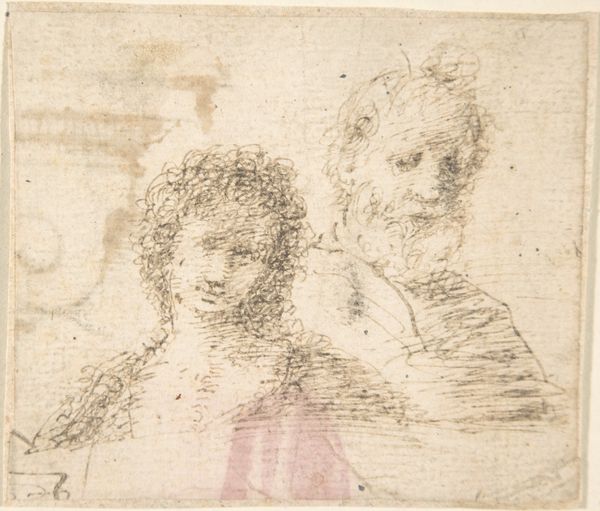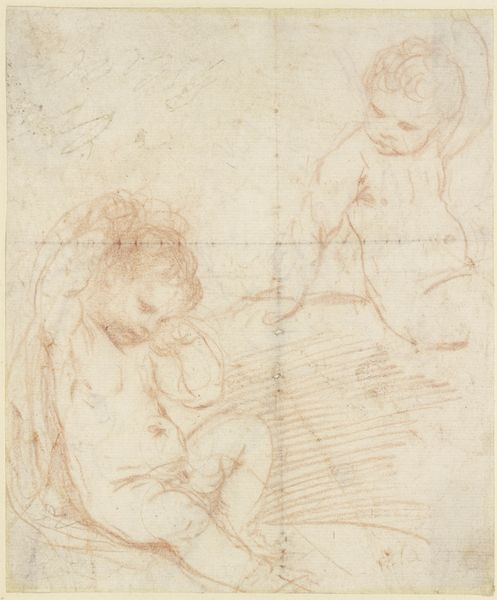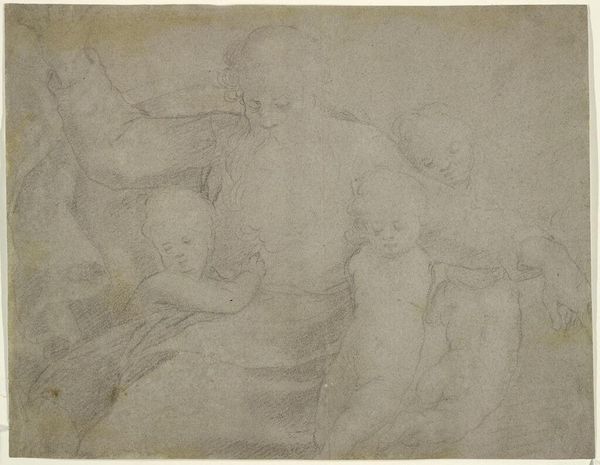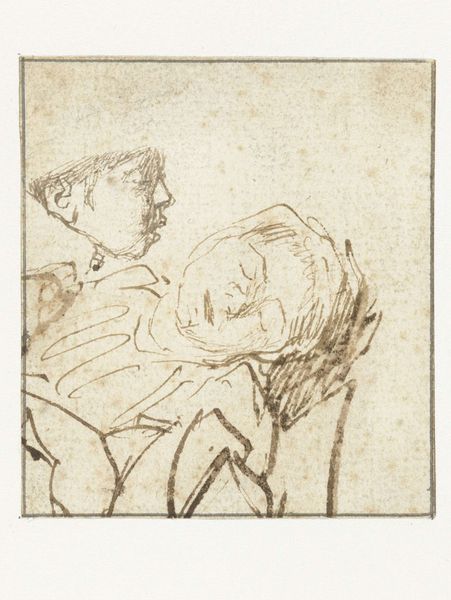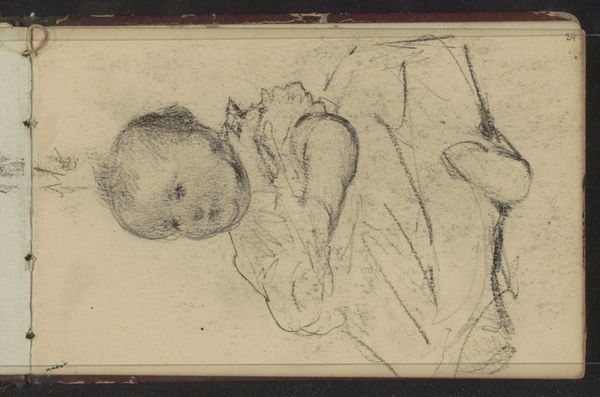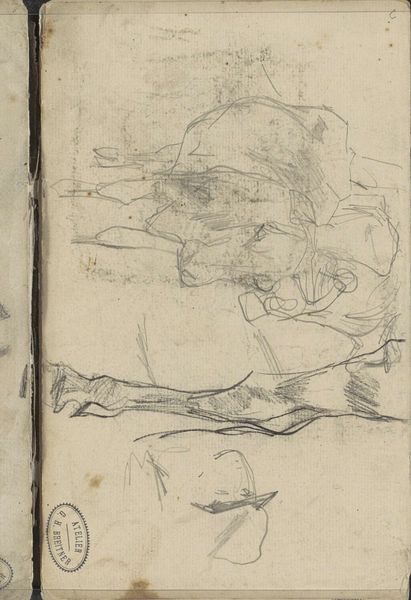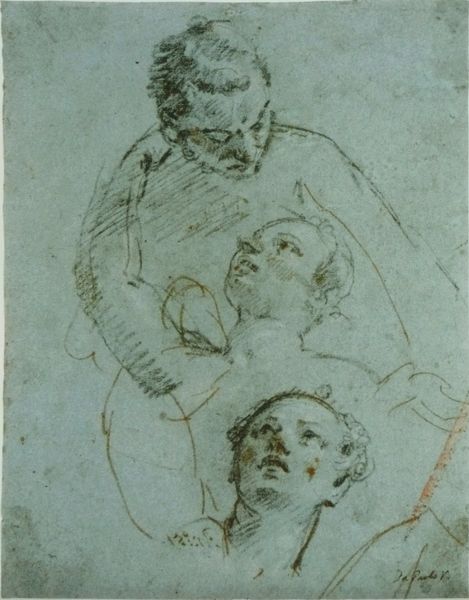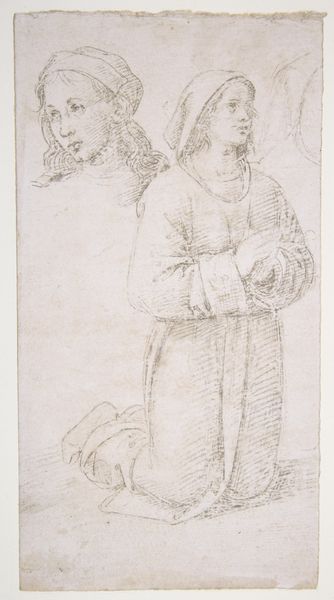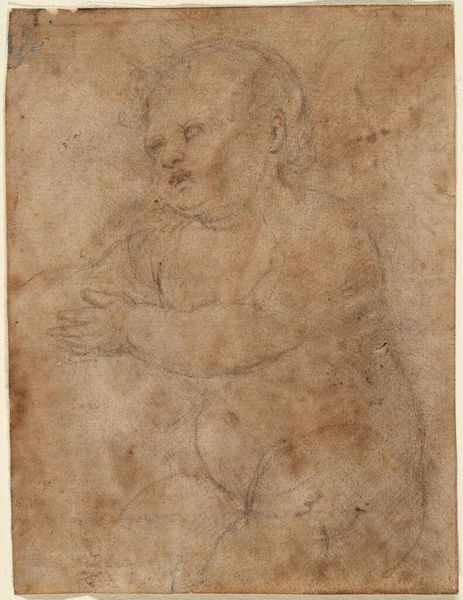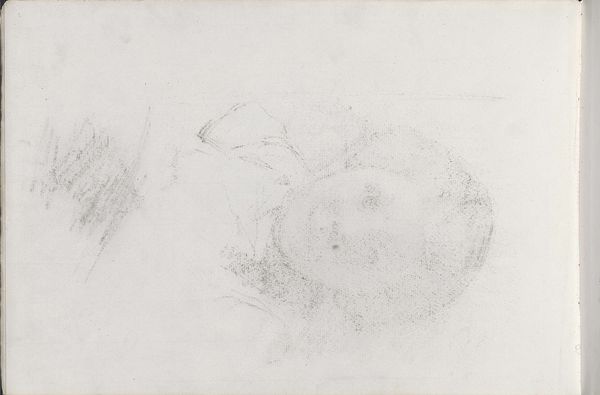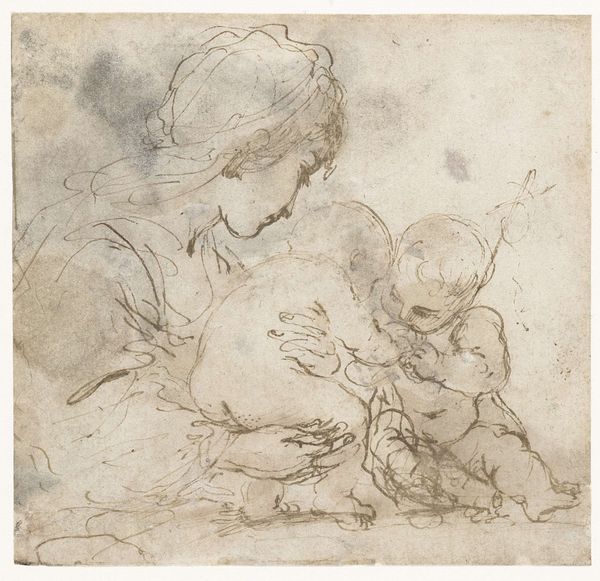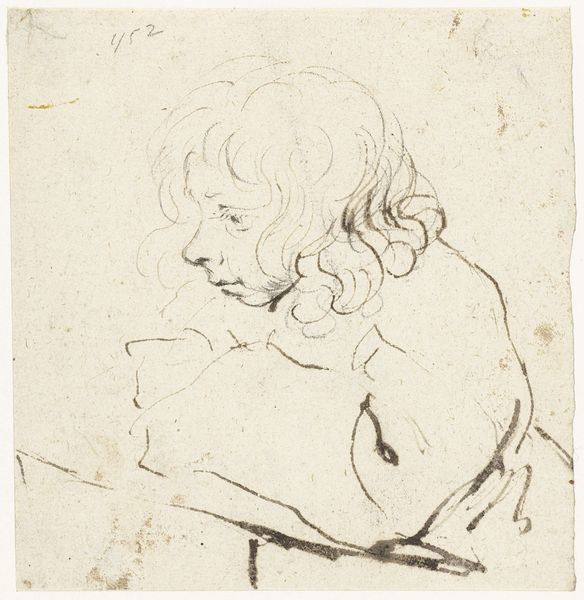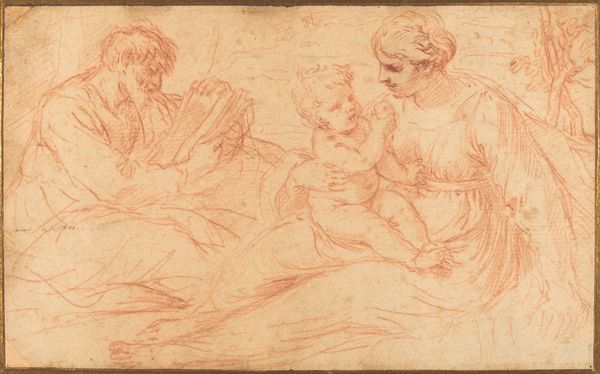
drawing, charcoal
#
portrait
#
drawing
#
charcoal drawing
#
figuration
#
11_renaissance
#
charcoal
#
italian-renaissance
Copyright: Public Domain: Artvee
Editor: So, this is Guercino's "Two Putti," a charcoal drawing from the 16th or 17th century, placing it squarely in the Italian Renaissance. It feels unfinished, like a sketch, but even so, the figures seem full of life. What’s your read on a piece like this, considering its historical and social context? Curator: Well, the depiction of putti, cherubic children, was incredibly common during the Renaissance and Baroque periods, serving as symbols of divine love, innocence, and even status. Often they appear in religious paintings, adorning Madonnas or surrounding holy figures. Do you notice anything about their arrangement, their actions? Editor: I see them gazing in slightly different directions; it almost looks as if one is looking out to the real world and the other looking inward. What could that indicate about Renaissance attitudes towards faith and knowledge? Curator: Exactly! Perhaps Guercino is subtly exploring the balance between earthly observation and spiritual contemplation, ideas at the forefront of Renaissance thought. Remember, this was a time of tremendous intellectual and scientific upheaval, challenging the Church's absolute authority. Artists found themselves negotiating these tensions. Think about who would have commissioned or collected this piece. Editor: Someone in the Church or the aristocracy, perhaps? So, they were in dialogue with these ideas? Curator: Precisely! Owning such a drawing might be seen as demonstrating taste, wealth and intellectual engagement. But drawings themselves are also interesting. How did academies change how art was practiced and who was doing it? Editor: That's so interesting! It makes me think differently about the function of art in that era. It’s not just about religious devotion, but also a marker of social and intellectual standing. Curator: Indeed. And, perhaps, a negotiation between tradition and emerging modern thought.
Comments
No comments
Be the first to comment and join the conversation on the ultimate creative platform.
